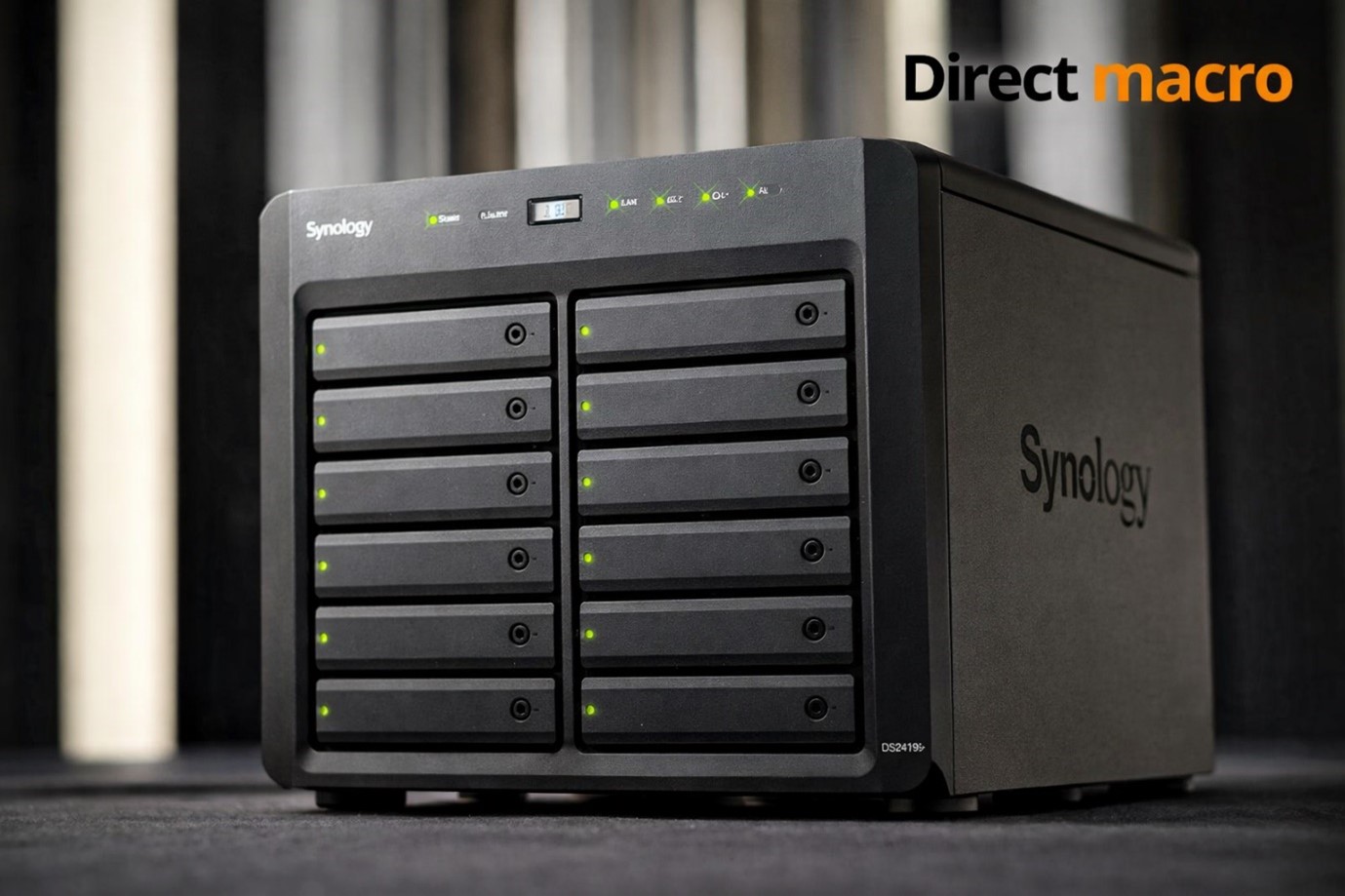Core and Secondary Computer Motherboard Components Explained
A computer motherboard is the most crucial component of a computer setup. It is called a motherboard for a reason. It connects and provides power to every motherboard component, just like a mother connects and feeds her family. Directly or indirectly, the whole PC setup is attached to it.
The motherboard often gives either direct or indirect power to most of the motherboard parts. The computer motherboard supplies power directly to the CPU, RAM, onboard graphics, and audio cards. Not only this, but with its flexibility and portability, it also provides power distribution to other components (hard drives, SSD, expansion cards, and optical drives) with cables and connectors.
What Does a Motherboard Look Like
When you visualize the keyboard, it looks like a printed miniature city from a bird’ s-eye view. Because of this colorful aspect, it has other names, like printed circuit board, printed wired board, system board, and main board. A fun fact is that it also got its name from the millennial generation, who call it MoBo or Mobo.
This all-imaginary scenery is for tech enthusiasts, but what about those who are not that technical? Regular people who just like to work on their desktop or laptop but have never been involved in opening the casing. Now, suddenly, the system is slowing down, to say the least, or component failure is happening more frequently than ever. If the computer motherboard or even components of a motherboard is short-circuited, then the PC system is done for good.
If, for these or any other reason, a person has to upgrade to a new computer motherboard and does not know or identify the internal components of a computer, what will they do? They will read this basic yet comprehensive guide about computer motherboards and parts of a motherboard. Why is it necessary to know motherboard components? Motherboards can also be repaired, and if you do not know what part is malfunctioning, how can you tell if it will be repaired or not? Let’s start from the basics.

What is a Computer Motherboard?
To make this more understandable, we are using the ASUS TUF GAMING X570-PLUS (WI-FI) Desktop Motherboard AMD X570 as an example. It is holding the market while staying in the loop. When it was released in 2019 no one was able to beat it at that time. It is compatible with AMD processors using the AM4 socket. Specifically, it supports:
- 1st, 2nd, and 3rd Gen AMD Ryzen processors
- Ryzen 4000 G-Series processors
- Ryzen 5000 Series processors
Do not get confused by the seemingly complex architecture. This and almost any other computer motherboard feature the standard collection of inputs, outputs, slots, and functions. We have tried to explain briefly the standard motherboard parts that are three;
Standard Components
- Slots
These are docking stations for the different hardware components that transmit data using different ports mainly designed for them. Today, computer motherboard brands usually provide PCI Express (PCIe) slots. They have almost entirely replaced the older ones, namely AGP (Accelerated Graphics Port)and PCI (Peripheral Component Interconnect). The AGP sockets, historically a standard for graphics card connectivity, are now left redundant and are hardly ever found in current motherboards released earlier than 2010. Unlike previous versions of expansion slots, PCIe is now a versatile and high-speed interface. It offers a wide range of connection types (not only graphics cards), strongly impacting computer motherboard design. - Sockets
Sockets on the computer motherboard offer a direct insertion point for certain key components, with the CPU socket being the most prominent. This socket is tailored to accommodate the processor, ensuring a secure and precise connection essential for the computer’s operation. - Connections
Connections on the motherboard facilitate the power flow from the power supply to the attached motherboard components. These connections often come in the form of pin connectors, with some utilizing specific raised sockets like the ATX power connectors, while others might be direct pin-outs. This network of connections ensures that each component receives the necessary power to function optimally.
Additionally, modern motherboards may include features such as M.2 slots for NVMe solid-state drives, offering significantly faster data transfer speeds than traditional SATA connections. They also typically come with a range of USB ports for peripherals, Ethernet and Wi-Fi for network connectivity, and audio jacks for sound output and input, further expanding their functionality beyond the core components. This evolution reflects the advancing needs of users, from gamers seeking the best motherboard for gaming to professionals requiring stability and speed for intensive applications.
Motherboard Parts and Functions
Now, let’s discuss the core and secondary motherboard components.
Core Components
It is the building block of the entire infrastructure on which the system’s capabilities, performance, and upgradeability rely. They define the highest capabilities of the PC, such as calculating power, memory capacity, data transfer speed, and expandability. The selection of the right primary components is vital in serving two functions – first, as a means of meeting the user’s needs today, and second, as a source of future upgrades, extending the life and adaptability of the build.
The parts of a motherboard that fall in this particular category are;
- CPU Socket
- RAM Slots
- Chipset
- Power Connector
- Expansion Slots (PCIe/PCI)
To explicitly explain motherboards components and their functioning, let’s try to understand each core component.
CPU Socket

CPU sockets, the critical interfaces between a motherboard and a processor, are primarily of two varieties: LGA and PGA (e.g., Land Grid Array and Pin Grid Array). LGA involves a contact matrix, whereas PGA utilizes pins that allow CPU connection to the motherboard.
However, there is also a spectrum among the socket versions within the LGA category, which in turn impacts CPU performance. In terms of computer motherboard quality and price, these dimensions are closely related to the novelty of the motherboard socket type, which is the base for supporting high-end CPUs.
Installing a CPU is straightforward: place the pins on the processor sides with the socket pins following the orientation marker (usually a small arrow on the CPU), and then lock it in place with the socket’s lever. Although the socket type seems to have mechanical simplicity, the understanding of this sophisticates the relationship between computing power and future upgrades, emphasizing the need for a computer motherboard that accommodates and meets present and future needs.
Read More: How to Check the CPU Temperature: Mastering CPU Care for Optimal Performance
RAM Slots
DIMMs (Dual Inline Memory Modules) are the specific areas on motherboards. You install RAM modules (Random Access Memory) here. They are usually parallel to the motherboard’s back panel connectors and may come in different configurations (2-DMM or 4-DMM slots).
DIMM slots in all modern motherboards are DDR SDRAM (Double Data Rate Synchronous Dynamic RAM). Which only has an indent, while SDRAM has two notches. A notch is a distinct feature of DDR/SDRAM devices. There have been changes to the indent during various generations for a seamless installation process and to ensure the best outcome regarding compatibility and performance.
See that the forthcoming DDR5 generation is not explicitly mentioned. But don’t be in any doubt! It is more apparent how its slot arrangement differs from previous generations.
Most DIMM slots are available in pairs. Sometimes, makers use contrasting colors to indicate single and dual-channel modes. To improve RAM performance, we recommend installing single RAM sticks into dual-channel slots. We prefer identical modules that work in sync from the same channels.
You must initially reclamp the small straps on each of DIMM’s ends to mount the RAM. After that, line up the RAM module’s notch with the nature of the individual slot’s specific cut-out – which may vary on each RAM generation to ensure appropriate installation. Now, if you align the RAM chip in the correct slot, please press the module firmly on the slot until the clicking sound confirms that the module is correctly in place.
Using this simple yet accurate installation method, your system will get memory access fast. Thus, its efficiency will increase, affecting its performance and preventing it from lagging when performing multiple tasks.
Chipset
The chipset is a core building block in the overall architecture of modern computers, dating back to the early period of mankind’s first personal computing. The first example that stands out in implementing a chipset is Intel’s introduction of the 82C206 in the late 1980s, also known as the “Iceberg.”
The “Iceberg” offered an evolution in PC architecture with integrated circuits responsible for combining many functions into a few unified sets of chips, thus simplifying the data flow within the system.
- Northbridge and Southbridge
Modern chipsets typically have two main components: the Northbridge and the Southbridge. The Northbridge communicates with high-speed devices like CPU, computer memory, and graphics card. Meanwhile, the Southbridge manages slower interfaces and peripherals such as universal serial bus (USB) ports, serial ATA (SATA) connections, and onboard audio.
Nevertheless, more functions that initially lay in the Northbridge are now directly part of the processor. The modern development of CPU design provides the basis for simplified chipsets centered on the Southbridge. This evolution aligns with the ongoing innovative and refined implementation of computer hardware improvements.
Power Connector

Power connectors on a motherboard are essentially the lifelines that feed electrical power from the power supplies (PSU) to the computer motherboard itself and, by extension, to the various motherboard parts it hosts.
The modern power connector has undergone a fantastic evolution, from the simple pins and sockets of yesteryear computing days to the more intricate and capable connectors of today. Initially, P8 and P9 connectors powered the motherboards in combination. After that, the 20-pin connector emerged, which was the ATX standard. Then, the 24-pin version was introduced for better stability and power distribution.
The upgrade of PCIe slots is due to the increasing demand for GPU power. As a result, three additional connectors, including the 4-pin Molex, 6-pin, and 8-pin PCIe connectors, were added to the board to ensure that power was delivered where needed without overburdening the main power supply.
The ASUS TUF GAMING X570-PLUS (WI-FI) utilizes a 24-pin ATX power connector. It is of prime importance for powering the entire motherboard. A dedicated 8-pin + 4-pin 12V power connector provides power to the CPU core. These different connectors go beyond mere electricity transporters; they are there to provide stable and efficient power delivery to support the motherboard’s demanding tasks, ranging from content creation to gaming or multitasking.
Expansion Slots
In computer systems, how expansion card slots evolved revolves from the old Peripheral Component Interconnect (PCI) of the ’90s to the advanced PCI Express (PCIe) technology today. The ASUS TUF GAMING X570-PLUS (WI-FI) motherboard for computer processing demonstrates this evolution. It comes with a bundle of PCIe slots or plug-ins capable of handling top-notch graphics cards or network and audio components. It is a crucial step in the development of computer hardware. We have traveled through the PCI, PCI-X, and AGP conduits, representing the standards of older times to the current and high-speed fabric like the PCIe protocol.
PCIe, which appeared in the early 2000s, really turned the table with its improved scalability and expansion slots from x1 to x16. It makes it easy to use different storages, including the recently introduced M.2 NVMe drives optimized for fast and efficient data exchanges. Its creativity was, in fact, a “game-changer” that showed much more flexibility and better performance results in comparison with the existing types of processors.
PCIe 5.0, one of the most advanced standards of this kind today, with PCIe 6.0 being on its heels, is the peak of expansion technology. The PCIe slots included by ASUS Gaming Z690 Plus WiFi in its model for different needs reflect the unstoppable progress of technology as it keeps up with the negligible evolution. The sleek and very structured notched connectors accentuate this.
Secondary Components
Secondary motherboard components play vital roles in complementing the primary functions. They enhance performance and provide connectivity options. The below-mentioned elements combine to support the motherboard’s operations and user needs.
- SATA connectors
- USB headers
- Fan connectors
- Front panel connectors
- BIOS chip
- CMOS battery
- Debug LED/Postcode display
Now onwards, explaining them briefly.
SATA Connectors

SATA connectors are essential for attaching data storage devices, including hard disk drives (HDDs) and flash memory drives (SSDs), to the computer motherboard. They facilitate data communication between the motherboard and storage units at significantly increased speeds via SATA cables. The successive versions improve data transfer speeds even more. Such connectors are essential for hardware expansion as they can support multiple channels for more drives.
USB Headers
The USB header is connected directly to the computer motherboard and is the source of the computer’s USB port expansion. It facilitates mounting front-panel USB headers or card extenders on the computer case. The system’s headers also facilitate expansion through various peripherals, such as external hard drives.
Fan Connectors

These connectors are specifically designed to supply power to the computer’s cooling fans. In addition to power, they provide variable speed control according to the system’s thermal properties, as regarded by motherboards. This regulation aims to achieve a good balance between heat removal efficiency and sound intensity levels.
Front Panel Connectors
This case part links the computer motherboard with the front panel elements. These elements include power and reset buttons, LEDs for power and disk activity, and sometimes audio connectors. They are vital to the link of the motherboard’s function with the case so that the user interaction becomes smooth.
BIOS Chip

The BIOS chip is a crucial point on the motherboard, saving the lowest-stage software component of the computer, the BIOS. The firmware starts the hardware initialization during booting processes and offers runtime services for the operating systems and programs, vital for system setup and hardware configuration.
CMOS Battery

The CMOS battery powers the computer motherboard’s CMOS chip, which is why the BIOS settings and system time and date information are kept secure when the computer is off. However, you should not underestimate it because it is the least voluminous part. It saves the right settings across restarts, thus preventing a user from re-configuring the system repeatedly.
Debug LED/Post Code Display
Some motherboards include features to provide updates through LED lights or alphanumeric displays even before accessing the system via the BIOS. This instant diagnostic setup is invaluable for prospecting and fixing boot errors or component issues, making this process faster.
FAQs
What is the role of the CMOS in a modern computer?
Nowadays, the CMOS (Complementary Metal-Oxide-Semiconductor) chip remains in computer systems. However, the CMOS battery maintains these settings and the clock. It guarantees that the user-defined settings for hardware setup and the timetable remains undisturbed when the computer is turned off.
What does a computer motherboard do?
A computer motherboard is the main circuit board inside a computer. It serves as a central bus that integrates all components and peripherals. Moreover, it helps the CPU and the other hardware, like RAM, storage devices, and other computer hardware, to communicate. The motherboard makes the system work in unison as a single unit through communication.
In a PC, which of the following components stores the bios?
When the computer starts, the BIOS, located in the BIOS or ROM chip on the computer motherboard, is responsible for all operations.
Conclusion
There you have it—the elaborate details of every core, primary, and secondary motherboard component to educate you enough to make a judgemental call. You should be able to know what parts are essential to save from power surges and which parts look the same but are different in physical and abstract form. What types of motherboards will require specific types of motherboard parts? If you need to look for a computer motherboard that meets your particular demands or motherboard accessories, please feel free to explore the sea of choices Direct Macro has. To inquire about anything, please hit us on our chat.
Do you need advice on buying or selling hardware? Fill out the form and we will return.

Sales & Support
(855) 483-7810
We respond within 48 hours on all weekdays
Opening hours
Monday to thursday: 08.30-16.30
Friday: 08.30-15.30








